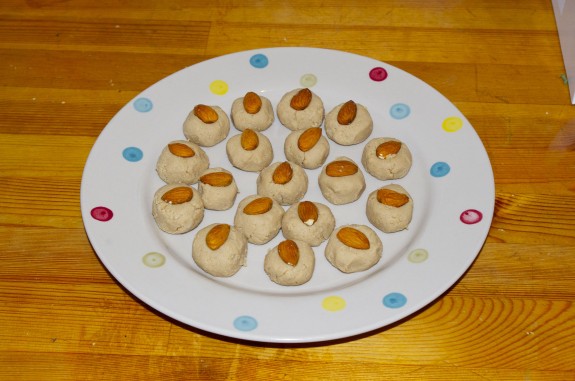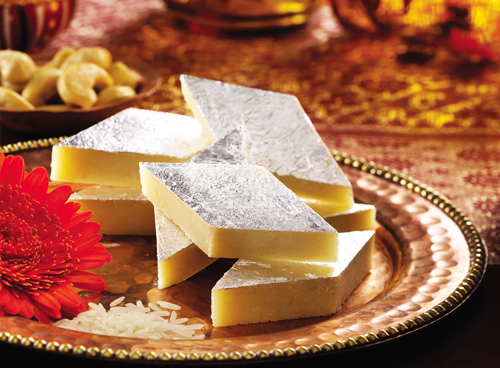Burfis are the most common Indian sweet out there, ranging from the popular kaju katlis to the flavorful and seasonal coconut and gajar (carrot) burfis.
Burfis are known for their sweet, creamy taste and soft texture. They are often served with nuts or fruit on top for decoration.
Photo courtesy of pakistanifoodblog.wordpress.com.
Culture
The word “burf” in Hindi means “snow” – which is what burfis are named after. Burfis take on the consistency of soft snow, and the plain burfi made of only condensed milk and sugar looks like fresh white snow as well!
Burfis were a common sweet served at Mughlai functions, such as weddings and family-get togethers. Certain burfis, like the peda, are eaten as a celebration – such as the celebration of an engagement or the birth of a child.
Ingredients
Burfis are made of condensed milk, sugar, and ghee. The ingredients are brought to a boil, stirred until they reach thick consistency, and then cut into shape when cooled. Ricotta cheese can also be used to make burfis that are creamier and thicker.
Burfis can be flavored with spices such as cardamon or saffron. Some burfis, like kaju katli, are topped with an edible silver foil, called vark.
Photo courtesy of ontarioimpex.com.
Burfi is a plain-looking sweet on its own, so it’s often flavored or heavily decorated. Nuts and fruits are common accessories to the common burfi.
Variations
Burfis are named after the main ingredient in the sweet. For example, besan burfi is made with gram flour (besan) and pista burfi is made with crushed pistachios.
Fruits and nuts can be added into the burfi mixture itself or used as a topping. Mango burfi is made with a mango pureee mixed into ricotta cheese.
Whatever you do, burfis are a must have at any major South Asian function.




